Horse people know the difference between a green prospect and a finished performer, and that’s a great mindset to adopt if you’re thinking about welcoming your first electric workhorse into the barn: an electric pickup truck.
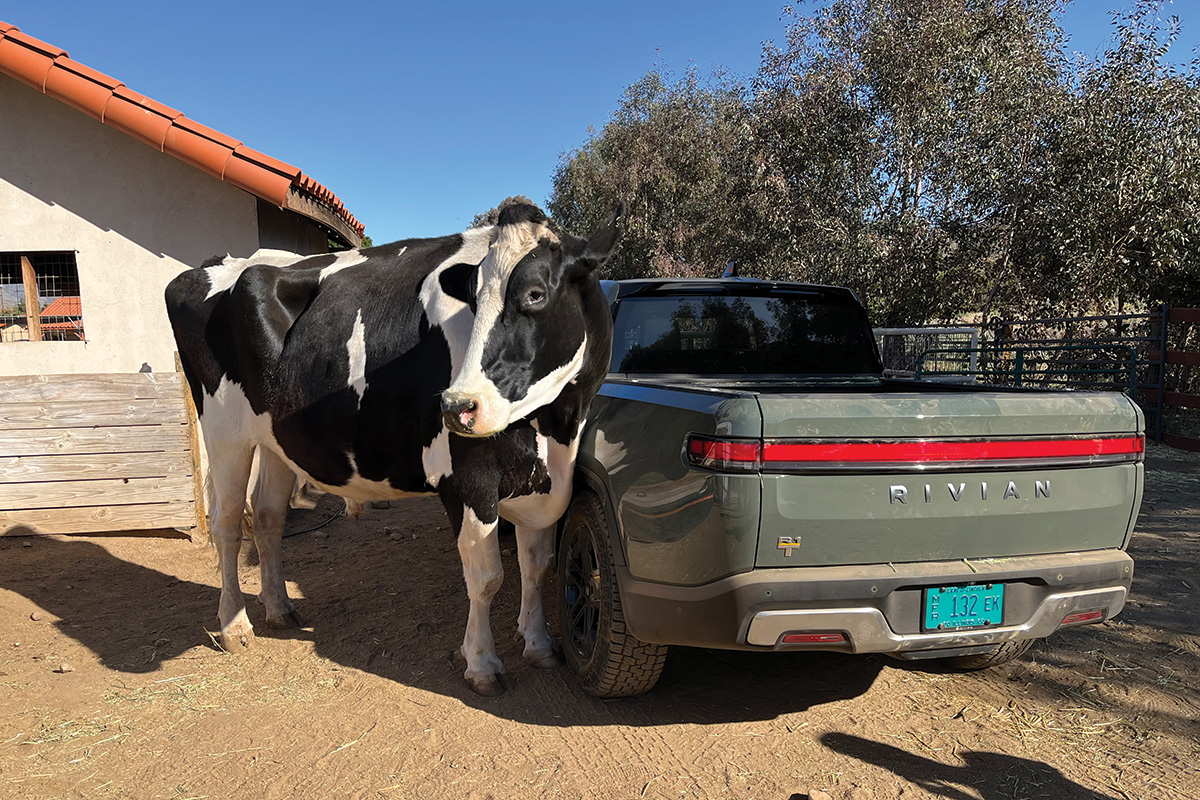
EV Foundation Sires
Since 2009, more have been joining the electric conversion conversation. The 2010s saw Phoenix Motorcars introduce a test fleet of all-electric SUTs (Sports Utility Trucks). Miles Electric Vehicles began importing a small Chinese electric pickup, the ZX40ST, and Canadian-based Ecotuned offered an all-electric conversion of the Ford F-150 for use by Hydro Quebec and Montreal Airport.
Not Just a Prospect
Fast forward to January 2023, and Robert Duffer, senior editor at TheCarConnection.com, said, “Electric pickup trucks are no longer a prospect: They are a reality. And they’re exceptional.”
Take the Ford F-150 Lightning. Exhibiting the same fine breeding as its bestselling forbearer, the Ford F-150, this EV pickup truck was named overall Car Connection Best Car To Buy 2023, saying the Lightnings are “not just great trucks, they’re evolutionary vehicles.”
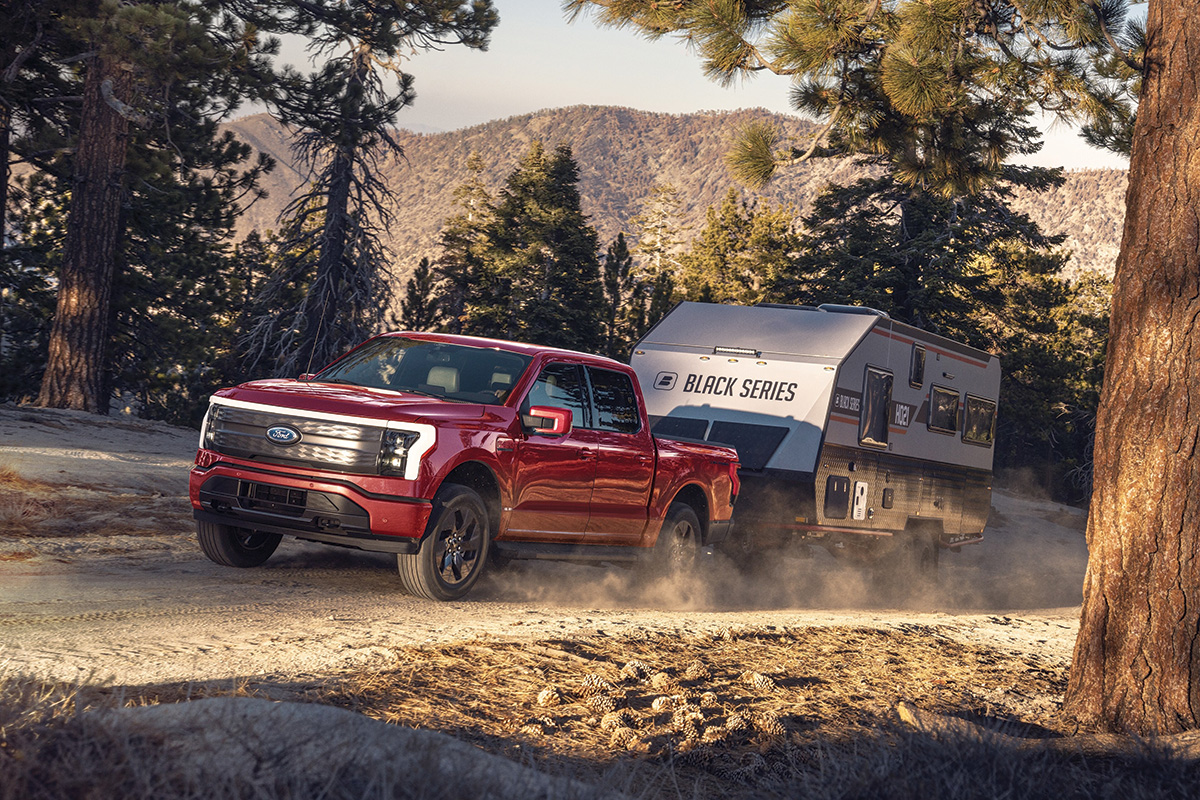
This season, roughly half a dozen American-made electric pickup trucks are for sale or under development. But like young racehorses at an elite auction, a buyer’s investment can be considerable.
The work truck that became the family truck can now double as a mobile boardroom and, commensurate with that evolution, J.D. Power says the price of pickups has increased about 3 percent a year since 2009.
Gas-powered pickups account for nearly 20 percent of all new-vehicle sales, with consumers paying an average of $60,000 for a new truck in 2022.
“Automakers have promised a $40,000 electric truck, but no one has yet to deliver one,” says Duffer. “In the first year of sales, the F-150 Lightning experienced three price hikes, amounting to a 40 percent increase as of December 2022.”
If this leaves some feeling financially over-horsed, there are options. A 2023 federal EV tax credit of $7,500 can be applied to new EV and fuel cell electric vehicle (FCV) trucks and SUVs costing less than $80,000 whose final assembly is in North America (see IRS.gov’s Credits for New Clean Vehicles).
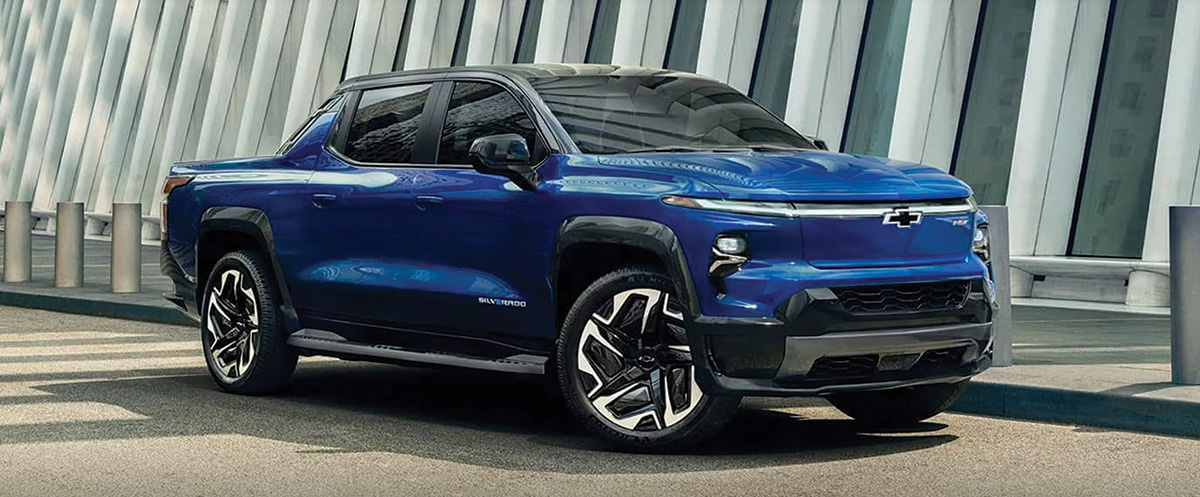
EVs listing for under $80,000 include the Ford F-150 Lightning (starting at $57,869) and 2024 Chevrolet Silverado EV ($39,900 base price), which shares an Ultium battery platform with the pricier ($86,245 EV2 base) GMC Hummer EV.
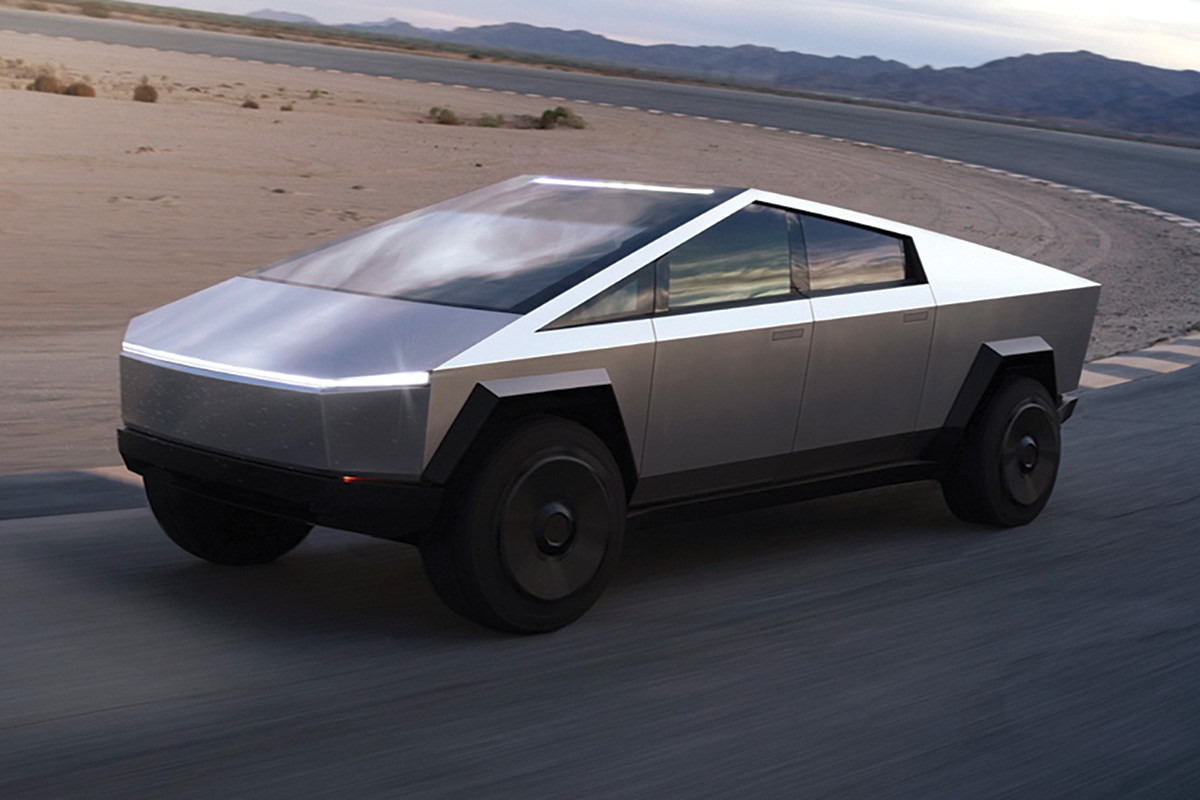
Two dark horses whose price and delivery are TBD are the Ram 1500 EV Revolution, aka “Ram Rev” around the barn, from Stellantix (nee Fiat Chrysler), and the mysterious stainless steel, wedge-shaped Tesla Cybertruck, hyped to offer a 500-mile range and tow capacity up to 14,000 pounds.
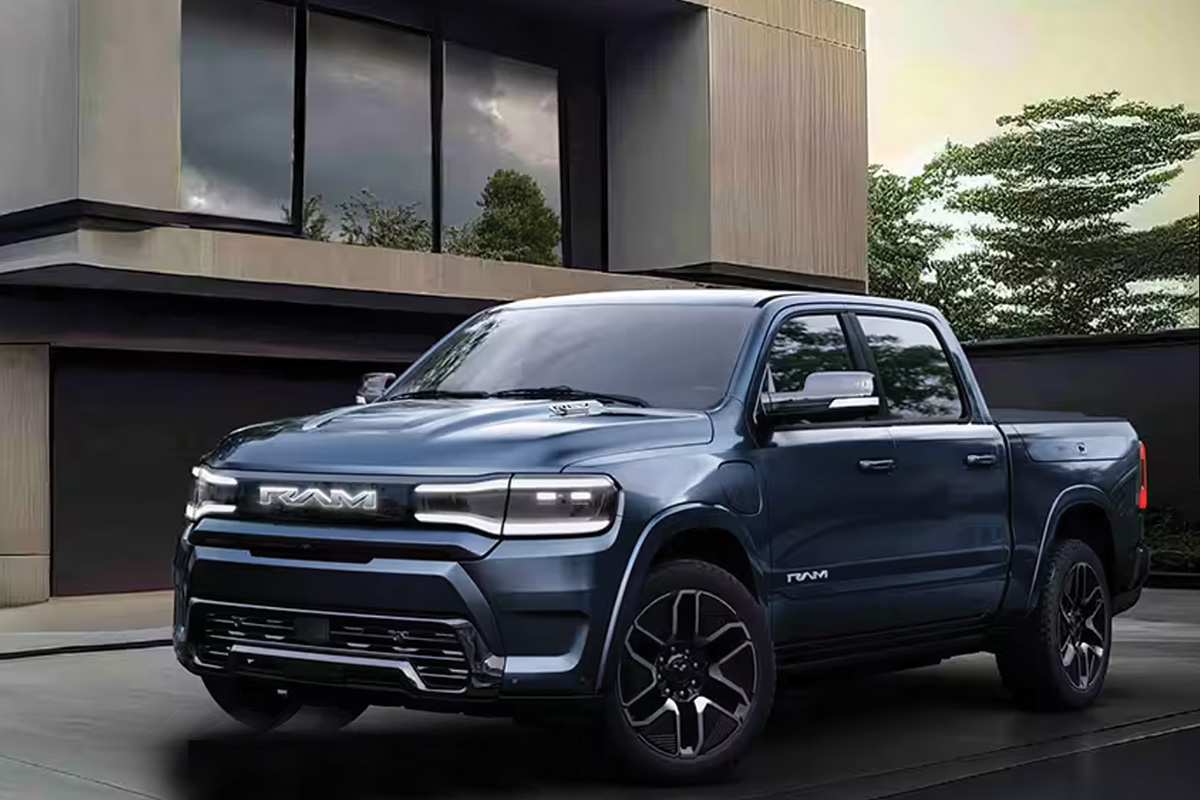
Among proven bloodlines stands a fierce little surprise talent that has been handily winning accolades, including the highest overall satisfaction ranking of any vehicle in the 2023 J.D. Power U.S. Electric Vehicle Experience Ownership Study, plus 2023 Car Connection Best Luxury Car to Buy, and 2022 MotorTrend Truck of the Year and Motor Authority Best Car to Buy.
Don’t let fancy introductions fool you. This EV is a proven workhorse. Meet the Rivian R1T, the performance prospect that everyone will be talking about.
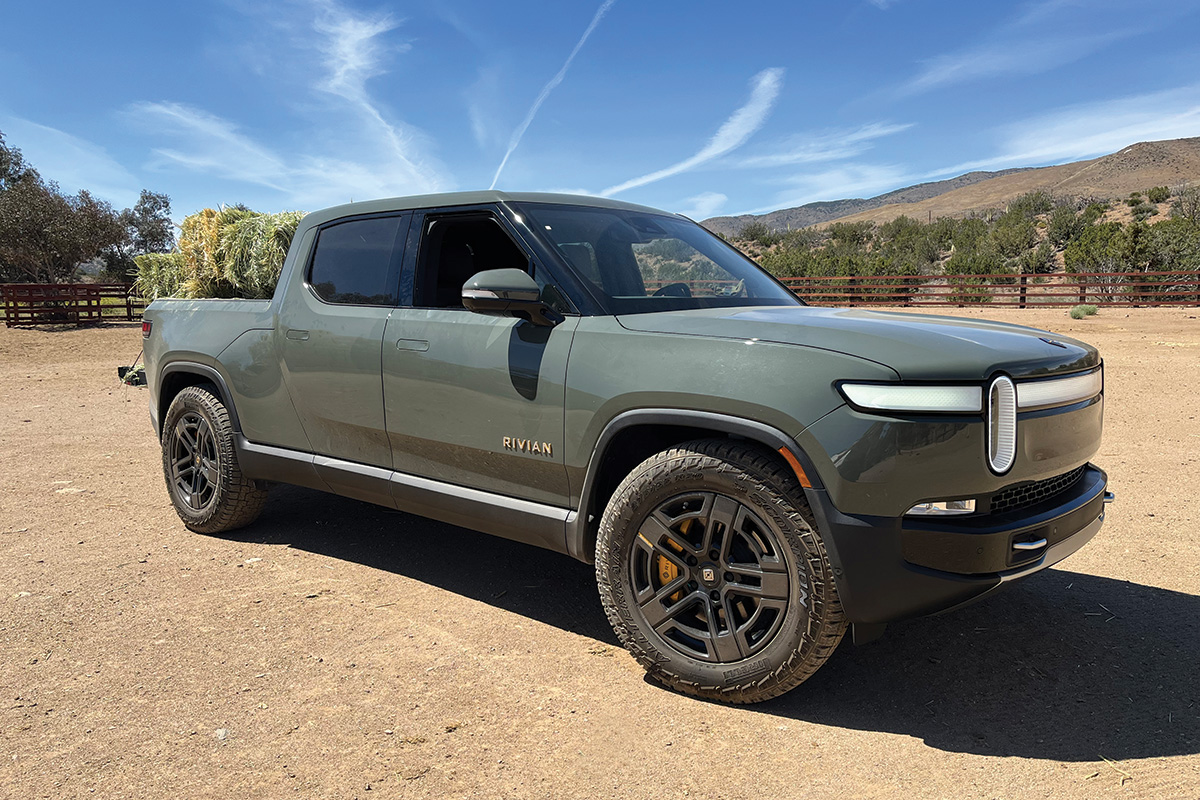
Rivian to the Rescue
California-based Rivian made the motor industry sit up and take notice in 2022 with the R1T ($74,800-$98,800), the first available battery electric pickup truck. The Standard (135-kwh) all-wheel drive has about 260 miles of range per full charge; the popular mid-range (135-kwh) has about 328 miles, and the Max (180-kwh) pack quad-motor R1T has a 400-mile range.
“By rethinking how a pickup truck can be built, how it can be propelled, how it can drive, how its spaces might be used, how we could interact with it, and to expand its target demographic, Rivian has forced the industry and market to reassess expectations,” wrote MotorTrend reviewers. “The R1T is not just an intellectual exercise; it is at its core a good truck by traditional definitions, too.”
Including quietly going where few have gone before: to a real farm, to do real chores.
In this case, to Farm Sanctuary, whose Los Angeles, Calif., and Watkins Glen, N.Y., locations have been havens of peace for rescued farm animals and retired horses for decades.
Christopher Kokotajlo, HR coordinator for Farm Sanctuary, was working as an environmental caregiver when MotorTrend contacted their organization in 2018 about testing four mid-size trucks. That “test ride” went well enough to earn a callback.
“[MotorTrend] loved our mission and had such a great experience collaborating with us that they wanted to do it again,” says Kokotajlo. Would Farm Sanctuary be interested in testing out an EV truck?
“They wanted to test the Rivian in ‘real-world scenarios,’” he says. “We let them know the kinds of tasks we routinely do, like loading hay to feed, hooking up trailers, et cetera. Farm Sanctuary uses large trucks to haul feed, equipment, and material, as well as large trailers when we need to perform rescues or transport larger animals.”
They’re always looking to improve transportation. Kokotajlo says the FS Environment team would kid about getting an electric truck “for both the ‘cool factor’ and ‘doing good for the environment’ factor.”
The truck was a hit.
“It looked sleek and futuristic while maintaining a ‘truck’ look,” says Kokotajlo. “It was silent while driving, which was great. We have a blind sheep named Biscuit who gets startled when we run heavy machinery, but he was very calm when we were driving by.”
The farm’s senior rescue horses, Darla, Joanna and Zoe, also tend to spook if a truck unexpectedly rumbles by, so for them, the EV silence was golden.
“Based on Joanna’s injuries, we speculate she was used for horse tripping at an illegal rodeo, but once you earn her trust, she’s a sweetheart,” says Kokotajlo. Joanna’s companion, Zoe, “loves her hay and isn’t afraid to let you know!” As will Darla, a malnourished surrender who’s now the feisty queen of the paddock.
When the Rivian drove by, “They stayed peacefully eating their hay.”
Inside, the truck’s cab was spacious.
“It fit five people easily, which means two can fit with plenty of space for tools and equipment,” says Kokotajlo. “There’s extra storage, like the ‘frunk’ (front trunk), and more space than usual between the bed and cab. The bed had a durable liner and cover that could lock to protect valuables.
“There was plenty of room to stack feed in the back and, when pulling the trailer, even as a passenger you couldn’t feel the truck working hard. It gripped the ground and maintained traction, making for safe handling on rocky or sandy terrain. Lastly, the truck was easy to hook up. It has hydraulic suspension that allowed for more flexibility in lowering the hitch onto the ball.”
EV at Work
MotorTrend wanted them to ask the R1T to perform two tasks Farm Sanctuary would otherwise have used traditional trucks for:
1. Hooking up a horse trailer and backing it into a pen.
2. Loading up the bed with hay to feed.
“The truck performed very well for these tasks, and I had no complaints,” says Kokotajlo. “Another bonus was, when running into town for errands, we wouldn’t be using gas and would be able to come home and plug it in rather than refuel.” In the long run, Kokotajlo feels that would save Farm Sanctuary money.
To test loading the bed with hay, they used the farm’s standard three-string bales, which measure 16″x22″x44″ and—depending on the type of hay or straw—weigh in at 50-100 pounds each.
“We fit five or six bales but, with careful planning, and using rope to tie it down, we could have stacked 10 to 12,” says Kokotajlo. “We have a hoop house where we store our hay (alfalfa, barley, orchard, timothy), which is fed to our cows, horses, goats and sheep. We also load up a trailer to bring out to the feeders along the back part of our property.”
That’s not to say that some aspects of the electric workhorse’s performance didn’t raise more questions than they answered.
“We make long drives with animals in the back, sometimes to emergencies where we can’t spend 30 to 60 minutes charging,” he says. “I’m curious about how the range alters when pulling a 20-foot trailer with a few large animals in back. MotorTrend was not able to speak to this, and I believe this [could be] a limiting factor to using an electric truck.
“The other thing I would love to see is the ability to install a gooseneck. I know many folks prefer goosenecks and there is not an option for this yet. [Goosenecks] are great for turn radius and tack areas that do not significantly reduce trailer space.
“Also, the towing capacity is stated as 11,000 pounds, which is toward the lower end of most of our trucks. This might not be an issue, depending on [your needs].”
Feeding the EV
Just how easy did Farm Sanctuary—with real mouths to feed—find recharging an electric workhorse?
There have been anecdotal complaints from EV owners regarding the unreliable state of too many of the 40,000+ public charging stations and 100,000 outlets in the U.S., such as broken chargers and screens, wonky software, et cetera.
J.D. Power surveyed more than 11,500 EV and plug-in hybrid owners in its 2022 Electric Vehicle Experience Public Charging Study and concluded, despite “big growth” in the number of public chargers, EV owners felt the overall experience “still sucks.”
Most owners do their charging overnight while parked at home, the study concluded, but if EVs are to become a more attractive option to buyers, charging stations will need to be become “more pervasive and reliable, like gas stations.”
Farm Sanctuary found the EV truck could be charged three ways: by Level 1 charging at home (a standard 120-volt household outlet); Level 2 charging at public stations (208- to 240-volt—Level 2 can also be installed in households by an electrician, just like an extra dryer plug); and Level 3 DC Fast Charge and Supercharging (400- to 900-volt), currently only available at specialized public charging stations.
“We tried [Level 1] to show that you can take an extension cord from your house, add an adaptor that comes with the truck, and plug your truck in,” says Kokotajlo. At a recharge rate of about 3 to 5 miles an hour, this is the slowest method.
“But if you use this overnight, it can charge 24 to 40 miles in eight hours. That’s a perfect [option] if you’re not using the truck for long trips.”
Level 2 charging will become more accessible as the 10,000 Rivian Waypoint chargers proposed in the U.S. and Canada become available near hotels, parks and commercial centers. As should super-fast Level 3 stations, with charging rates of 3 to 20 miles per minute.
“It’s a little bit of a learning curve,” Kokotajlo says about the care and feeding of the EV workhorse, “but once you understand the differences, it felt intuitive. It was like plugging in your toaster.”
Comfort Zones
Feel is important in good horsemanship, and this EV wasn’t Kokotajlo’s first rodeo.
“I have personal experience driving EVs,” he says. The direct handling of the R1T was limited to the MotorTrend team. “[But] when we drove around the Sanctuary, the first thing I noticed was how silent it is. We had the windows down and I could hear the gravel crunch.
“There was a bit of a learning curve. It wasn’t so much the acceleration, which is fast and smooth, but the regenerative braking, which felt similar to downshifting, but not as ‘planned’ as driving with a stick. After learning what it does, it was nice to have the vehicle help with the braking while also capturing the energy.” In regenerative braking, every time you lighten your foot off the accelerator pedal, the car feels like it’s applying a light brake, and captures the energy to boost the battery’s charge.
He also found the dashboard intuitive.
“It felt like a large tablet. It was a bit weird, not seeing A/C buttons and dials but, after learning where everything was, it made sense. You can control everything from the screen.
“Another cool feature is that the truck can be updated. If there is software that changes how it handles regenerative braking to make it more efficient, you don’t have to go to a shop to activate it. You hook your EV to Wi-Fi and it updates itself. This is a cool concept as the truck can improve without you having to invest in new parts or technology.”
Ready to Saddle Up?
Prospects versus proven performers start with finding the right partner for the job. Is the EV ready to go to work in every equestrian facility? Maybe not yet, but Farm Sanctuary sees that the potential is out there.
“The truck itself is very high quality, which was noted in the finishes, the thoughtful features, and performance. For how Farm Sanctuary uses trucks, I think a Rivian EV would handle the workload.”
But despite a desire to advocate “full force” for the truck, Kokotajlo has reservations.
“I wish we could have tested some main concerns, the primary one being range when hauling. While not confirmed, I’ve heard there can be up to 50 percent reduction in range when hauling, depending on load and terrain. This might or might not be a dealbreaker for some folks. For shorter trips, this would be fine, but for larger or emergency trips, it would not.
“Lastly, for the price and what the truck can do, I’m uncertain on the ROI [return on investment]. But if a few things get ironed out, this truck will be a no-brainer purchase.”
Overall, the EV pickup truck is probably still a long yearling for most horse facilities, but in a few years, they’ll be finished performers.
Further Reading
◆ Choosing a Vehicle to Tow Your Horse Trailer
◆ Selecting a Horse Trailer to Fit Your Needs
This article about electric pickup trucks appeared in the June 2023 issue of Horse Illustrated magazine. Click here to subscribe!





